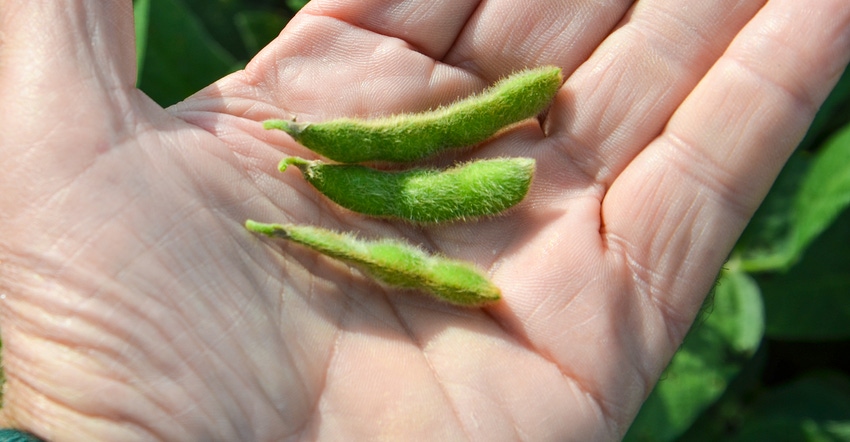
If you pull a few soybean plants and find a mix of pods with three beans, a few with four and some with two, don’t be alarmed. Three will likely be average, but plants typically have a different number of soybeans per pod.
That’s the word from Steve Gauck, Beck’s sales agronomist based near Greensburg, Ind. Beck’s sponsors Soybean Watch ’18.
“We see three beans in most pods, and sometimes you find some with four in certain varieties when conditions are good,” he says. “But you’ll also find pods with only two beans inside. Sometimes you can find them all on the same plant.”
Gauck says such variation is not unusual and shouldn’t be a cause for alarm. What matters is soybean size, he says. If you have enough beans per acre, size of bean goes a long way toward determining final yield.
Some varieties tend to have larger or smaller seed based on genetics. Gauck says if it’s a good year, you want to see as many beans of optimum size for that variety as possible. “That’s what produces top yields,” he says.
Bean number
Number of beans per pod can vary based on weather and environmental conditions, Gauck says. If soybeans are stressed, they may abort a bean and make either a three-bean pod instead of a four-bean pod, or a two-bean pod instead of a three-bean pod.
Since the plant is in the reproductive phase for a long time during the growing season — from perhaps late July through early September, depending upon the variety — the stress may come at different times. If soybeans are dry for a while but then it rains, you may find more pods with just three or even two beans on portions of the plant that formed during the most stressful period.
Other factors also play a role in how soybeans form and develop, Gauck says. If the stand count is high, say 140,000 plants per acre or more, soybeans may do less branching. Nodes may be farther apart on the stem, as soybeans tend to grow taller when planted thicker. Number of beans per pod may or may not be affected. Total number of beans per plant will be less than on plants planted thinner that produce one or more branches, Gauck observes.
“That’s why we don’t get concerned if we have around 80,000 plants per acre in 15-inch rows,” he says. “At that population, you can expect more branching. When soybeans branch more, you wind up with more pods per plant. Even at three soybeans per pod, you can still achieve a good yield.”
What you need to pull off that high yield, as always, are conditions that pump up the size of each bean, he adds.
You also need to avoid damage from late-season diseases and insects. Some reports of stem canker, which is not usually a concern, came in near the end of the season. There were also reports of bean leaf beetles feeding on pods, Gauck says.
About the Author(s)
You May Also Like




